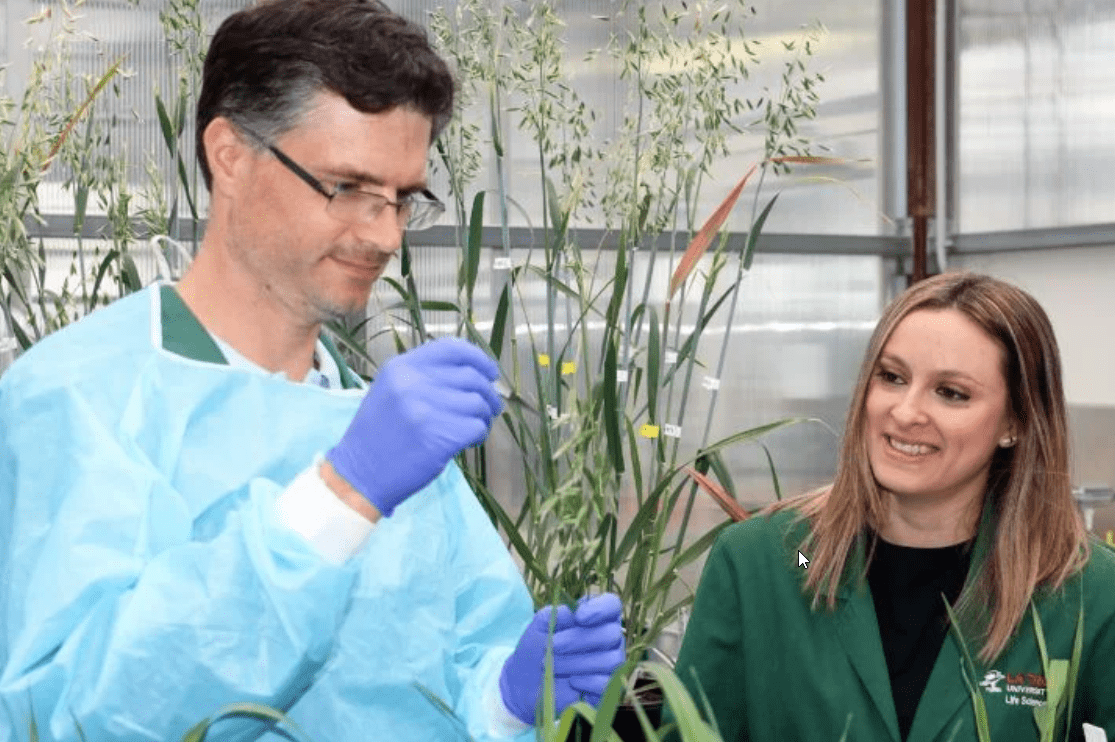
Marta Peirats-Llobet and John Humphries from La Trobe University’s Institute for Agriculture and Food (LIAF). Photo: La Trobe
LA TROBE University’s Institute for Agriculture and Food (LIAF) researchers have partnered with global food and beverage company PepsiCo on a project to map the oat plant genome in an effort to edge breeders closer to better oat varieties.
The research has resulted in a new “oat transcriptome”, now freely available to oat breeders and biotechnologists across the world.
LIAF Associate Professor Mathew Lewsey said the new knowledge was a win for farmers and consumers.
“Australia’s oat industry is worth $400 million per year to the national economy, and feeds thousands of people in Australia and overseas every day,” Associate Professor Lewsey said.
“The more knowledge breeders have of the genetic make-up of the oat plant, the easier it is for them to create a higher-yielding, more reliable crop that is resilient and nutrient-rich.”
LIAF Associate Professor Monika Doblin, who instigated the collaboration between La Trobe and PepsiCo, said the new knowledge comes at a critical time for Australia’s agricultural industry.
“As climate change continues to impact on our land and water resources, Australia and other countries around the world will increasingly experience unprecedented levels of food insecurity,” Assoc Prof Doblin said.
“We need to shore up the future of our important crops, like oat plants, to ensure we can sustain a growing global population, increasingly living at the mercy of climate change.”
PepsiCo Global Foods R&D senior vice president Denise Lefebvre said this research expanded on work in 2020 to sequence and assemble the entire oat genome.
“This collaboration and continued understanding of the oat genome offers significant potential to increase the resiliency of food systems and to provide heartier oat varieties with improved nutrition, sustainability and taste,” Ms Lefebvre said.
Path to better oat varieties
Prior to this study, scientists had identified 66,474 genes which produced 76,988 “transcripts”, the messages from the genes that tell plant cells how to behave.
The updated transcriptome has 68,572 genes and 273,045 transcripts.
Individual genes and transcripts have distinct roles, so the more complete the map of the oat plant genome, the easier breeding the ideal crop becomes.
Exporting more than 240,000 tonnes of raw oats each year to countries like China, India, Malaysia and Japan, Australia is the second-largest oat exporter in the world.
A key issue for the major world oat producers, including Australia, is the lack of stability in year-to-year supply due to seasonal imbalances such as drought.
China overwhelmingly presents the largest growth opportunity for Australian raw oats and oat products, as its consumers seek more diverse diets to complement their staple traditional foods of rice and wheat noodles.
Source: La Trobe University

HAVE YOUR SAY